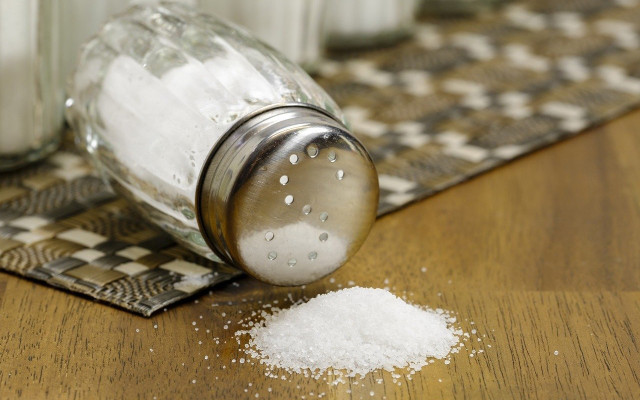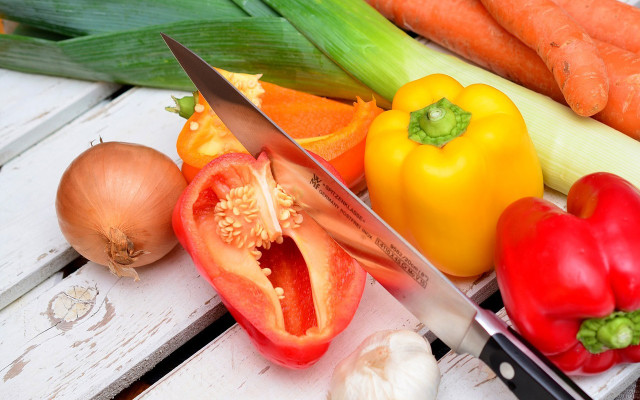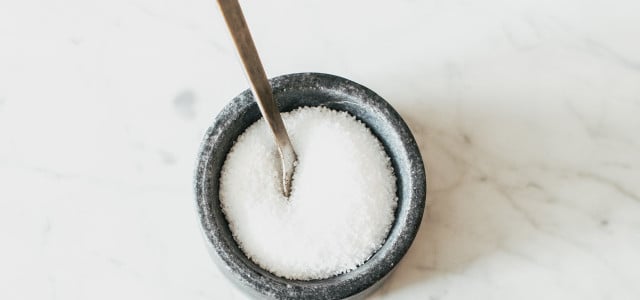Too much salt in your diet can result in unpleasant symptoms and cause lasting damage to various organs over time. Here’s how you’ll know it’s time to consume less with a low salt diet.
The majority of the sodium we consume doesn’t usually come directly from the salt shaker. Processed and prepared foods from supermarket shelves and restaurant tables are the primary culprits. So when exactly is too much salt bad for you?
In this article, we’ll take a look at how much salt healthy adults should eat, how we end up eating so much salt and which symptoms and health effects overconsumption can have. We’ll also show you how to best limit salt intake with a low-salt diet.
When is Too Much Salt a Problem?

Long ago, salt was an expensive luxury product only accessible to the social elite. Today, this “white gold” has established a firm place in kitchens all over the world. And it seems as if hardly any dish can do without it.
Salt is absolutely essential for survival: Salt supplies us with the electrolytes sodium and chloride. These help to regulate the balance of fluids in our bodies. However, according to the American Heart Association, adults should consume no more than 2,300 milligrams (mg) or roughly one teaspoon of salt per day. Due to the absolute abundance of microwave meals, fast food, chips, and other tempting snacks, we (along with approximately 90% of Americans) often consume too much salt.
According to the U.S. Food and Drug Administration (FDA), Americans on average consume 3,400 mg of salt per day – close to 50% too much. And a diet with too much salt has short-term and long-term consequences.
Utopia’s tip: How to Lose Weight Naturally: 10 Healthy Ways to Lose Weight
The Long-Term Health Effects



A high content of salt in your blood causes more water to accumulate in the bloodstream. As a result, the fluid volume increases and blood pressure rises. In the long run, high blood pressure threatens to damage other organs, particularly the heart, coronary arteries, other blood vessels, the brain, and kidneys.
Too much salt in your diet can lead to the following health conditions:
- Heart failure and cardiac arrhythmia
- Heart attack
- Stroke
- Chronic renal (kidney) insufficiency
- Kidney failure
- Vision problems and deterioration
So consuming too much salt isn’t only a risk to those already suffering from high blood pressure (in the U.S. this makes up approximately one third of adults). It is a decisive risk factor for serious long-term organ damage for all population groups.
Too Much Salt: Symptoms
Given every person reacts differently to salt, there are no general concrete indications of excessive salt consumption we all can expect to experience. The only reliable indicator is high blood pressure. However, consuming too much can result in other symptoms such as:
- Tiredness or fatigue
- Concentration difficulties
- Trembles or “the jitters”
- Seizures
- Edemas
To avoid these unpleasant symptoms, you can begin by taking a number of simple and easy preventive measures which will help you control and reduce salt intake. Here are some simple tips on how to transition to a healthy low-salt diet.
Which Foods Contain the Most Salt?



Step one is knowing which foods to avoid. According to the FDA, the following processed or prepared foods often contain a lot of salt:
- Pizza
- Sandwiches
- Deli meats (particularly ham and salami)
- Pasta dishes
- Snacks
- Salad dressings
- Soups
- Cheese (especially gorgonzola, gouda and feta)
The FDA also points out that it’s important to keep in mind that not all foods high in sodium actually taste salty. Sweet-tasting cereals are one common example.
In addition to this, there are a lot of foods we are used to making at home that may fall under the “too much salt” banner. And let’s be honest, not all of us take the time to add up the nutrition values of every item going onto our ham sandwich.
Utopia’s tip: Swai Fish: 5 Reasons Not to Eat Pangasius
How to Transition to a Low-Salt Diet



To avoid the unpleasant symptoms and consequences of consuming too much salt, you should first begin to gradually transition towards a low salt diet. Often our taste buds have adapted so much to salt that foods part of a low-salt diet quickly seem bland to us. You should therefore allow yourself enough time to slowly reduce your craving for salt. This way you’re much more likely to stay on the ball in the long run.
Here are some helpful hints on how to stay on track towards transitioning to a low salt diet:
- The first step towards adopting a low salt diet is to cross out any pre-made meals from your healthy grocery list and start cooking more from scratch. Make sure to use salt sparingly when cooking.
- Try to avoid heavily processed foods as much as possible. The nutrition facts should give you an idea of how high the salt content is.
- Eat enough unprocessed food such as fruits and vegetables. In general, a largely plant-based diet will help you to avoid too much salt, as it avoids meat, fish and dairy products. Read on: Benefits of Going Vegetarian: Simple Tips for Beginners
- If you don’t want to do without animal products completely, you should find adequate low-salt alternatives to high-salt foods. For example, cheeses such as mozzarella and cream cheese usually have a lower salt content than gouda. Mortadella and liverwurst are among the low-salt types of sausage, but in contrast to other foods they still contain relatively high amounts of salt.
This article was translated from German to English by Evan Binford. You can view the original here: Zu viel Salz: Anzeichen und wie du salzhaltige Lebensmittel vermeidest
Important Information regarding Health-related Topics.
** Links to retailers marked with ** or underlined orange are partially partner links: If you buy here, you actively support Utopia.org, because we will receive a small part of the sales proceeds. More info.Do you like this post?






